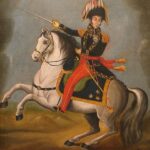![]()
Several waves of national popularity of Hawaiian music have facilitated exposure for Polynesian traditions. In the late 1800s and early 1900s, Hawaiian music became known outside Hawai’i through two means.
First, travelers who visited Hawai’i wrote descriptive accounts of performances that emphasized their exoticness, the aura of which has remained an important marketing tool in the tourism industry. Second, troupes began touring the United States and Europe, starting with the 1893 World Exposition in Chicago, where hula dancers entertained daily on the Midway Plaisance for six months. Another troupe spent several months at the 1905 Exposition in Buffalo.
The Columbia and Victor record companies began commercial recording of Hawaiian music in 1905. Although performers were recorded in Honolulu by teams of traveling engineers, the recordings enjoyed national distribution and sales; remarkably, Hawaiian music was not marketed as “race” or “ethnic” music. The Panama-Pacific Exposition, held in 1915 in San Francisco, was the event that launched unprecedented interest in Hawaiian music on the continent. Live performances stimulated widespread interest in the islands’ repertoire and instruments.
The debut of the song On the Beach at Waikiki at the Panama-Pacific Exposition is credited with sparking a national fad for Hawaiian songs. Its English-language lyrics play on the first line repeated in each of five verses; literally meaning “quick, let’s kiss,” the line is not directly translated in the song. Its representation of Hawaiian maid as siren is made explicit in the fourth verse: “‘Honi kaua, a wikiwiki,’ she was surely teasing me, So I caught that maid and kissed her on the beach at Waikiki.”







